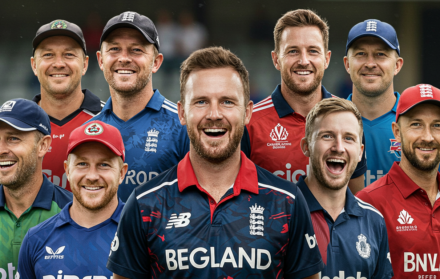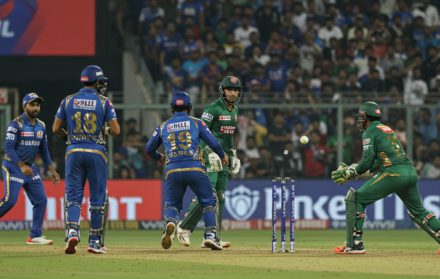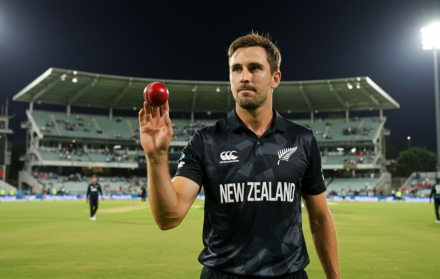
Women’s Cricket and The Inclusion of Diverse Cultures
Women’s cricket has long been a sport that celebrates diversity and inclusivity, reflecting the rich tapestry of cultures and backgrounds that make up the global cricketing community. As the sport continues to evolve and grow in popularity, the inclusion of diverse cultures has become increasingly important in shaping its future direction.
From its humble beginnings to its current status as a global phenomenon, women’s cricket has played a pivotal role in breaking down barriers and promoting equality both on and off the field.
The history and evolution of women’s cricket provide valuable insights into the sport’s journey towards greater inclusivity.
From the early pioneers who paved the way for future generations of female cricketers to the modern-day stars who inspire millions with their skill and dedication, women’s cricket has come a long way in challenging stereotypes and forging a path towards gender equality.
The influence of women’s cricket extends far beyond the boundaries of the playing field, with the sport playing a key role in promoting gender equality and empowering women and girls around the world.
Through initiatives aimed at increasing participation and providing opportunities for female athletes, women’s cricket has become a powerful force for positive change, helping to break down barriers and challenge societal norms.
In addition to promoting gender equality, women’s cricket also plays a vital role in the fight against sexism and discrimination. By showcasing the talent and athleticism of female athletes and challenging traditional gender roles, women’s cricket helps to challenge stereotypes and promote a more inclusive and equitable society.
Through initiatives aimed at combating sexism both within the sport and in wider society, women’s cricket continues to lead the way in promoting equality and social justice.
The contributions of prominent women cricketers have been instrumental in driving forward the cause of diversity and inclusion in the sport. From trailblazers who shattered glass ceilings to modern-day icons who inspire the next generation of female athletes, these women have played a crucial role in shaping the future of women’s cricket and promoting the inclusion of diverse cultures within the sport.
The Growth and Popularity of Women’s Cricket

The growth and popularity of women’s cricket has significantly increased in recent years. Investment and support from cricket boards and organizations, along with the rise of women’s cricket leagues and tournaments, have played crucial roles in fueling this growth.
These concerted efforts have led to notable advancements in training facilities, coaching programs, and resources available to women cricketers. The stellar performances of women’s national teams such as Australia, England, and India in international tournaments have served as inspiration for young girls aspiring to take up cricket.
Promoting Diversity in Women’s Cricket
Promoting Diversity in Women’s Cricket is crucial for the sport’s growth and inclusivity. Here are some key aspects to consider:
1. Representation: Ensuring diverse representation in women’s cricket guarantees equal opportunities for players from various backgrounds, including ethnicities, cultures, and countries.
2. Inclusion: Establishing an inclusive environment means providing equal access to training, resources, and facilities for all players, irrespective of their background.
3. Outreach Programs: Implementing outreach programs that target underrepresented communities can help discover and nurture talent. This can be accomplished through partnerships with local schools, community organizations, or talent identification camps.
4. Cultural Sensitivity: Nurturing a culture of respect and understanding involves promoting awareness of different cultures and traditions, encouraging players to embrace their diverse backgrounds.
5. Education and Awareness: Increasing awareness about the significance of diversity in women’s cricket can alter perceptions and dismantle barriers. This can be achieved through campaigns, workshops, and educational programs for players, coaches, administrators, and fans.
Promoting diversity in women’s cricket is about creating an inclusive and welcoming environment. By embracing diversity, women’s cricket can flourish and inspire future generations of players.
Benefits of Inclusion

The benefits of inclusion in women’s cricket are numerous. Incorporating inclusion in women’s cricket has a positive impact. It embraces and represents a diverse range of talent in women’s cricket. Inclusive cricket brings together players from different backgrounds, cultures, and experiences, creating a rich mosaic of perspectives and skills.
This diversity is beneficial as it encourages healthy competition among players and motivates them to enhance their skills. When players with different abilities come together, they can learn from each other and improve their overall performance.
Inclusion also empowers women from all walks of life to actively participate and take on leadership roles in cricket. It breaks down stereotypes and barriers, inspiring a new generation of players to pursue their passion for the sport. The empowerment that comes with inclusion is invaluable.
Inclusion attracts a wider fan base in women’s cricket. People from diverse cultures can relate to and support players who share their background or experiences. This leads to increased interest, support, and engagement in women’s cricket. The expansion of the fan base is a significant benefit of inclusion.
Importantly, inclusion in women’s cricket promotes equality and social cohesion, having a positive impact on society as a whole. It sends a powerful message that everyone deserves the opportunity to participate and excel in sports, regardless of their background or identity. The positive impact on society is another great advantage of inclusion in women’s cricket.
Breaking Cultural Stereotypes
To break cultural stereotypes in women’s cricket, it is important to challenge preconceived notions and promote inclusivity and diversity within the sport. Consider the following factors:
1. Representation: Increasing the representation of diverse cultures in women’s cricket by actively recruiting players from different backgrounds and promoting equal opportunities. This helps break down cultural barriers and creates a more inclusive environment.
2. Education: Educating players, coaches, and fans about different cultures and traditions through cultural sensitivity training, workshops, and awareness campaigns. This fosters understanding and respect.
3. Language: Embracing different languages and encouraging multicultural communication to enhance cultural integration within the team and promote unity. Providing language support and incorporating multilingual resources to ensure every player feels valued and understood.
4. Celebrating Diversity: Acknowledging and celebrating cultural differences by showcasing cultural festivals, traditions, and ceremonies. Creating a platform that celebrates the richness and diversity of each player’s background.
5. Role Models: Inspiring young players from different cultures to pursue their dreams by highlighting the success stories of players from various backgrounds. Challenging cultural stereotypes and inspiring the next generation.
6. Collaboration: Fostering a supportive and inclusive cricketing community by encouraging collaboration and partnerships between different cultural groups. Organising joint events, tournaments, and exchange programmes to cultivate mutual respect and understanding among players and fans.
By actively breaking cultural stereotypes in women’s cricket, we can create an environment that embraces diversity, promotes inclusivity, and encourages players from all cultures to participate and thrive in the sport.
Expanding Opportunities for Players from Diverse Backgrounds

Expanding Opportunities for Players from Diverse Backgrounds is crucial to promoting inclusivity and diversity in women’s cricket. Steps must be taken to ensure equal access and opportunities for players from all walks of life.
- Encouraging participation: To expand opportunities for players from diverse backgrounds, cricket organisations should reach out to communities not involved in the sport. This can be achieved through community outreach programmes, school initiatives, and local partnerships.
- Providing resources and support: It is essential to provide necessary resources and support systems to players from diverse backgrounds. This includes access to training facilities, coaching, equipment, and financial assistance. By removing financial barriers, more players will have the opportunity to pursue their cricketing dreams.
- Promoting diversity in leadership positions: To create an inclusive environment, it is important to have diversity in leadership positions within cricket organisations. This ensures that the perspectives and needs of players from diverse backgrounds are represented and addressed.
- Celebrating diversity: Cricket organisations should celebrate the diversity of their players and promote inclusivity within the sport. This can be done through cultural awareness training, inclusivity workshops, and showcasing diverse role models within the cricket community.
- Ensuring equal opportunities for progression: It is vital to provide equal opportunities for players from diverse backgrounds to progress in their cricketing careers. This includes representation at regional, national, and international levels, access to talent development programmes, and professional leagues.
By expanding opportunities for players from diverse backgrounds, women’s cricket will reflect the rich cultural tapestry of society and become a platform for empowerment and inspiration.
Increasing Fanbase and Engagement
To increase the fanbase and engagement in women’s cricket, several strategies can be implemented:
1. Organise promotional events, such as cricket clinics, coaching sessions, and meet-and-greet sessions with players. This can attract new fans and engage existing ones.
2. Enhance media coverage by ensuring comprehensive coverage across various platforms. This can include live streaming of matches, highlights packages, and regular updates on social media.
3. Collaborate with influencers, bloggers, and popular sports personalities to reach a wider audience and generate interest in women’s cricket.
4. Offer discounted tickets, especially for families and students, to make attending matches more accessible and encourage more people to experience the excitement of women’s cricket.
5. Expand grassroots programmes to nurture young talent and cultivate a fanbase from an early age. This can include school programmes, community coaching clinics, and talent identification camps.
6. Encourage fan engagement through opportunities for interaction with players, such as autograph sessions, fan forums, and online Q&A sessions. This fosters a sense of connection and loyalty among supporters.
7. Host themed events centred around specific themes, such as family days, charity matches, or cultural celebrations. This attracts different demographics and creates a vibrant atmosphere.
8. Collaborate with local businesses to offer promotional deals and discounts for fans attending matches. This incentivises attendance and creates a symbiotic relationship between the cricketing community and local businesses.
Creating Role Models for Future Generations

To create role models for future generations in women’s cricket and the inclusion of diverse cultures, we must focus on specific actions and strategies.
1. Encourage participation: Provide equal opportunities for girls and women to participate in cricket through school programmes, community initiatives, and accessible training facilities. This will cultivate a diverse talent pool of young girls interested in cricket.
2. Showcase diverse role models: Highlight successful and diverse female cricketers who can serve as role models for young girls. Showcasing their achievements, dedication, and skills will inspire future generations and help them envision a path in cricket.
3. Mentorship programmes: Establish mentorship programmes that connect aspiring young female cricketers with experienced players. These programmes will provide guidance, support, and encouragement, nurturing the talent and potential of young players.
4. Collaboration with schools and clubs: Build strong partnerships with schools and cricket clubs to create a pathway for young girls to pursue cricket. Integrate cricket into physical education curricula and offer development opportunities through local clubs, providing a platform for young girls to showcase their talent.
5. Celebrate achievements: Recognise and celebrate the achievements of female cricketers at all levels. This can be done through media coverage, awards, or dedicated events, inspiring and motivating the younger generation.
By implementing these actions and strategies, we can create a future generation of female cricketers who serve as role models. Equal opportunities, mentorship, and celebration will encourage young girls to pursue their passion for cricket and thrive in the sport.
Challenges and Solutions
When it comes to women’s cricket, incorporating diverse cultures poses certain challenges that must be addressed. The major challenges and potential solutions to promote inclusivity in the sport are as follows:
- Lack of representation: A significant challenge in women’s cricket is the limited representation of diverse cultures. To address this, cricket authorities should actively recruit players from different backgrounds and provide equal opportunities to all aspiring players.
- Cultural barriers: Cultural barriers can hinder the participation of women from certain communities. To overcome this challenge, cricket associations should organize community outreach programs, engage with cultural leaders, and educate them about the benefits of women’s cricket.
- Limited resources: Certain regions may lack the resources required, such as proper training facilities and equipment. To tackle this issue, cricket organizations need to invest in infrastructure development, provide financial support to underprivileged communities, and ensure equal access to resources for women cricketers.
- Prejudices and stereotypes: Stereotypes and prejudices can prevent women from diverse cultures from fully participating in the sport. To address this, it is crucial to implement educational campaigns, enforce strict anti-discrimination policies, and promote cultural sensitivity within the cricket community.
- Social acceptance: In some societies, resistance to women participating in sports may exist. To promote social acceptance, awareness programs should be conducted to highlight the importance of gender equality and the benefits of women’s participation in cricket.
The rise of the Indian women’s cricket team in recent years demonstrates the flourishing of women’s cricket when challenges are overcome. Their performances have significantly improved, and they have gained recognition on the international stage.
By addressing these challenges and implementing appropriate solutions, women’s cricket can become a more inclusive and diverse sport, providing opportunities for women from all cultures to excel and contribute to the game.
Providing Equal Resources and Training Opportunities

Providing equal resources and training opportunities is crucial for the development and growth of women’s cricket. Here are important factors to consider:
1. Funding: It is essential to allocate adequate financial support to ensure equal resources for women’s cricket teams. This includes budgetary resources for equipment, facilities, and coaching staff, ensuring that there is no disparity.
2. Infrastructure: Developing appropriate infrastructure is vital to provide equal training opportunities. This encompasses well-maintained cricket grounds, training facilities, and dressing rooms specifically tailored for women cricketers.
3. Coaching and Development Programs: It is crucial to invest in coaching and development programs that prioritize women’s cricket. Specialized training programs, workshops, and mentorship opportunities should be offered to enhance skills and enable players to reach their full potential.
4. Inclusivity and Diversity: Embracing inclusivity is key to providing equal resources and training opportunities. The creation of an inclusive environment that encourages participation from women of all backgrounds, cultures, and abilities is essential.
5. Talent Identification: Implementing effective talent identification programs is necessary to discover and nurture young talent in women’s cricket. Regardless of their socio-economic background, talented players should be given opportunities to showcase their skills.
6. Participation and Exposure: Encouraging participation and providing equal exposure to women’s cricket events and competitions is crucial. This not only raises the sport’s profile but also provides a larger platform to showcase women’s cricket skills.
By focusing on these factors and ensuring equal resources and training opportunities, women’s cricket can thrive and pave the way for a more inclusive and diverse future.
Addressing Cultural Barriers and Biases
To promote inclusivity and diversity in women’s cricket, it is crucial to address cultural barriers and biases.
1. Education: One way to address cultural barriers and biases is through education. By raising awareness about different cultures and breaking down stereotypes, we can create a more inclusive environment in women’s cricket.
2. Representation: It is important to ensure diverse representation in women’s cricket, including players, coaches, officials, and administrators. Having a variety of role models and leaders can inspire women from all cultural backgrounds to participate in cricket.
3. Accessible Opportunities: Providing equal and accessible opportunities for women from different cultural backgrounds is vital. This includes offering training programmes, facilities, and resources in areas that may have limited access to cricket traditionally. By making the sport more accessible, we can encourage participation and talent development in diverse communities.
4. Collaboration and Partnerships: Working with cultural organisations, community leaders, and local authorities can effectively address cultural barriers and biases. By collaborating and working together, we can overcome challenges, promote understanding, and create inclusive spaces for women’s cricket.
Addressing cultural barriers and biases is essential, as demonstrated by the example of Jackie Robinson breaking the colour barrier in baseball in 1947. Despite facing discrimination and adversity, Robinson’s inclusion paved the way for talented players from diverse backgrounds to enter the sport. This highlights the transformative power of addressing cultural barriers and biases.
By actively addressing cultural barriers and biases, women’s cricket can become a truly inclusive and diverse sport, providing opportunities for women from all backgrounds to excel and contribute to the game. Let us continue striving for equality, representation, and understanding within the cricketing community.
Developing Inclusive Policies and Programs

Developing inclusive policies and programs is crucial for promoting diversity and equality in women’s cricket. Creating an environment that embraces and supports diverse cultures ensures equal opportunities for everyone to participate and succeed in the sport.
Here are key considerations when developing inclusive policies and programs:
1. Representation: Diverse representation in decision-making roles ensures inclusive policies and programs. This includes women from different cultural backgrounds in leadership positions.
2. Education and Awareness: Programs that educate players, coaches, and officials about different cultures foster understanding and respect. This can include workshops, cultural awareness training, and resources promoting inclusivity.
3. Language and Communication: Providing multilingual resources and interpreters overcomes language barriers and ensures effective communication with players from diverse cultural backgrounds.
4. Accessibility: Making cricket facilities and programs accessible to all is essential. This includes considering the needs of players from different cultural backgrounds, such as dietary requirements or religious practices.
5. Partnerships: Collaborating with community organizations and cultural groups cultivates relationships and promotes participation. This can involve hosting community events, establishing mentorship programs, or creating talent identification pathways.
6. Evaluating Impact: Regularly monitoring and evaluating the impact of inclusive policies and programs is vital. This involves collecting data on player demographics, feedback surveys, and performance indicators to assess initiative effectiveness.
7. Celebrating Diversity: Emphasize the importance of diversity and inclusion through campaigns, events, and celebrations. Recognize and showcase achievements and contributions from players of different cultural backgrounds to inspire and motivate others.
8. Ongoing Review: Inclusion is an ongoing process, and policies and programs should be regularly reviewed and adapted. This ensures they remain relevant and responsive to the changing needs of participants.





